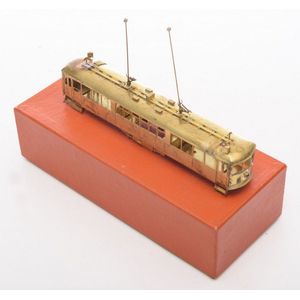Antique Welch Rosewood Shelf Clock, 1875
E.N. Welch 'Parepa V.P.' 8 day time and strike shelf clock with tablet pendulum, original glass, paper dial and rosewood case, circa 1875, 56 cm high
You must be a subscriber, and be logged in to view price and dealer details.
Subscribe Now to view actual auction price for this item
When you subscribe, you have the option of setting the currency in which to display prices to $Au, $US, $NZ or Stg.
This item has been sold, and the description, image and price are for reference purposes only.
- Pendulum - The pendulum was discovered around 1602 by Galileo Galilei, and was adopted for time keeping by the Dutch mathematician and natural philosopher, Christiaan Huygens, who excelled in astronomy, physics, and horology.
The pendulum comprises a metal rod usually of brass or steel with a metal disk, known as a bob, at the end. The movement of the pendulum is driven by weights or a spring, and as a pendulum swings in a regular arc, it was found accuracy could be controlled to within a few seconds a week.
Timekeeping can be adjusted by changing the height of the bob on the rod, making the pendulum either swing slower or faster.
The disadvantage of the pendulum was that changes in temperature also changed the length of the pendulum, interfering with the accuracy of the clock, and so in the 18th century two types of mercurial pendulums were invented which countered the movement in the steel rod.
The pendulum was the world's most accurate timekeeping technology until the invention of the quartz clock, regulated by a quartz crystal, in 1927. - Rosewood - A dense timber that varies in shade to very light brown to almost black. When rosewood is cut and sanded the colour of the timber will turn black, and after polishing and exposure to daylight, the surface will gradually lighten over time to light brown with black streaks.
The name comes from the odour emanating from the timber when it is planed, sanded or cut.
Rosewood was very popular for use in Victorian furniture in the second half of the 19th century, and at that time most of the rosewood was imported from Brazil. However it also grows in India and Indonesia.
It is used in the sold for chairs and table legs, but for carcase furniture such as side cabinets and bookcases, and for table tops it is always used as a veneer. - Circa - A Latin term meaning 'about', often used in the antique trade to give an approximate date for the piece, usually considered to be five years on either side of the circa year. Thus, circa 1900 means the piece was made about 1900, probably between 1895 and 1905. The expression is sometimes abbreviated to c.1900.
This item has been included into following indexes:
Visually similar items

Two Louis Roederer champagne buckets, silver plate
Sold by
in
for
You can display prices in $Au, $US, $NZ or Stg.

Pair of antique French leadlight windows, with original hardware, each 128 cm high, 87 cm wide (2)
Sold by
in
for
You can display prices in $Au, $US, $NZ or Stg.

A Specialty scale models HO gauge Victorian Railways Vlx/Vlcx Louvre van, painted brass
Sold by
in
for
You can display prices in $Au, $US, $NZ or Stg.

White 8ct gold and diamond eternity ring, full circle of 20 diamonds, size 4-5/I-J, total weight 2.2gms
Sold by
in
for
You can display prices in $Au, $US, $NZ or Stg.
